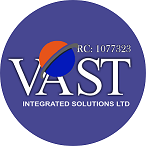SKM 201 [Arc Flash, Auto Coordination & Evaluation]

About Course
[Arc Flash Analysis and Simulations & Evaluation]
The course covers the overview of the Arc Flash standards and reviews the calculation and modeling procedures in Arc Flash and Coordination Evaluation.
Course Highlights
- To develop a working knowledge of the PTW Arc Flash and Auto Coordination & Evaluation
- To understand the Arc Flash standards and calculation method
- To obtain hands-on experience in Arc Flash Label creation and customization
- To understand the step-by-step evaluations process and criteria for protective and non-protective devices
- Arc Flash analysis of several hands-on examples of electrical distribution systems utilizing the PTW software
- Interpretation of PTW Arc Flash results and study options
- Review issues related to energy accumulation and multiple contributions and its effects on Arc Flash
Course Benefits
- Interactive One-Line Diagrams:Allows for easy creation and modification of system diagrams with customizable data displays.
- Datablocks:Enables the display of various input data and study results on one-line diagrams.
- Intelligent Automation:Automates tasks like one-line diagram creation, data input, and study result analysis.
- Copy/Paste Functionality:Simplifies the replication of components or system sections.
- Zoom and Navigation Tools:Allows for efficient navigation of large and complex diagrams.
- ANSI and IEC Symbol Support:Supports global projects with interchangeable symbols.
- Component Management:Allows for easy movement, deletion, and in/out of service placement of equipment.
- Area Expansion/Collapse:Enables customized views of the one-line diagrams.
Others are:
- Design safer power systems while applying the NEC 110.16, OSHA, NFPA 70E, IEEE 1584 and NESC standards or requirements.
- Save time with the fully integrated Short Circuit, Over-Current Coordination, Equipment Evaluation
- Arc Flash Evaluation modules working together with libraries of clothing levels, protective devices and bus ratings.
- Provide a safer working environment by specifying the proper level of clothing.
- Evaluate alternatives quickly and easily to establish an optimal design.
- Improve safety margins with user-definable arcing fault tolerances.
- Save time by automatically generating arc flash labels and work permits.
- Avoid potential fines, lost productivity, and increased insurance and litigation costs
Industry Applications
The Broadest Range of Industry Experience
- Power systems engineering consulting
- Process Industries: Oil and Gas, Chemical, Cement, Pulp & Paper
- Power & Energy: Generation, Transmission, Distribution, Nuclear, Smart Grid, Micro-grid
- Industrial: Manufacturing, Transportation, Metals & Mining
- Mission Critical: Data Centers, Operations Centers, Healthcare
- Government & Education: City/State/Federal infrastructure, Defense (including Net Zero) Universities
Prerequisite
- Basic computer skills
- PTW 101 or equivalent
